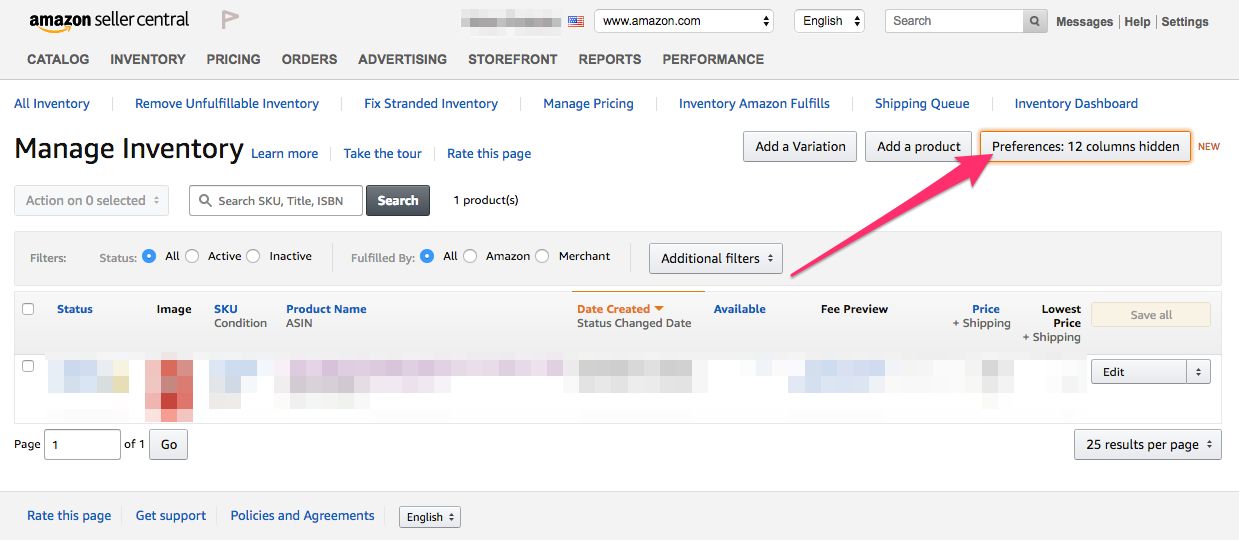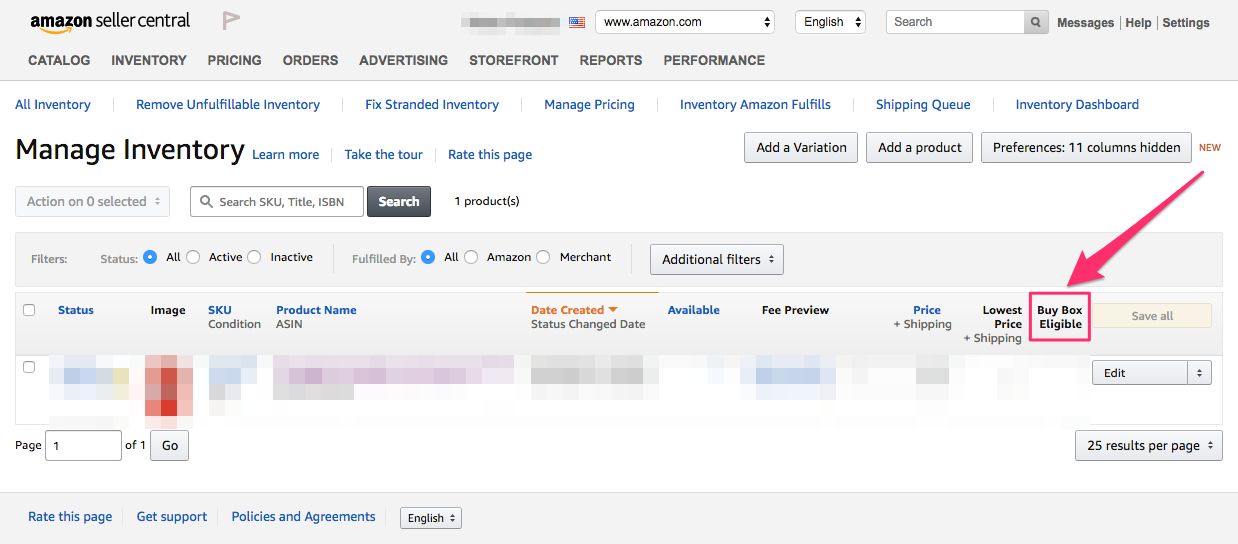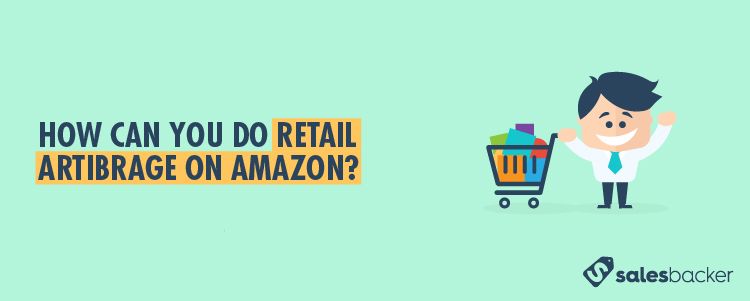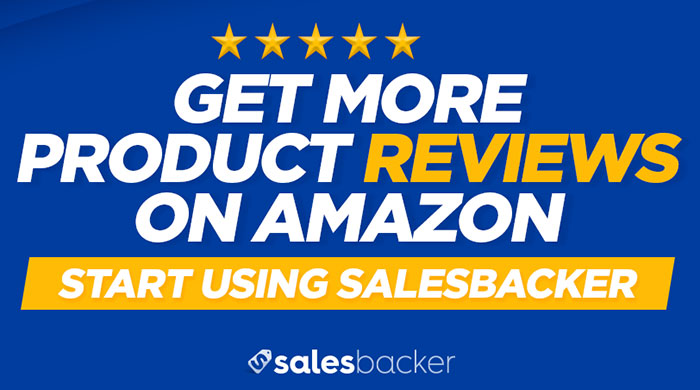What is Retail Arbitrage?
Put plainly, retail arbitrage is when a person buys a product from one retailer and resells the product at a profit via another retailer. Many third-party sellers on Amazon have used retail arbitrage to benefit from market inefficiencies caused by retailers and manufacturers. For example, maybe a retailer ordered too much inventory and it isn’t selling quickly enough so they decide to markdown the price to move it off their shelves more quickly. Or perhaps a product has been discontinued by a manufacturer and put on clearance by the retailer, but there is still significant market demand for the product. With enough demand, the price for a discontinued product can quickly skyrocket, and a savvy third-party seller can take advantage of this to make a profit.
It may seem at first glance that this model doesn’t make sense. Afterall, isn’t the price just the price? But prices can vary significantly from retailer to retailer, or even from location to location. Just because you can find a great price on a product in a store where you live, doesn’t mean that you can’t resell the product at a higher price online to customers who can’t find the product in their local area. Another reason that retail arbitrage works is because some customers are willing to pay a premium for the convenience of buying a product online. Even if they can get the product cheaper in a store, if they don’t have to deal with the hassle of running an errand, some customers will pay a higher price.
FBA and Retail Arbitrage
The nature of Fulfillment By Amazon (FBA) lends itself well to third-party sellers looking to make retail arbitrage work. First and foremost, compared to fulfilling orders on your own from your home or another location, with FBA you aren’t limited by storage space, so in theory you can sell as many items as you want. If you find a great deal on a product that you know you can resell at a profit, you can purchase as many units as circumstances allow, without having to worry about finding space to store the items while you wait for them to sell. You also save a lot of time, hassle, and money by using FBA for retail arbitrage, since Amazon handles all of the order fulfillment logistics and shipping details as well as customer service. Also, having your products eligible for Amazon Prime and free two-day shipping means you have an active customer base at your fingertips. So, it’s not a surprise that for many third-party sellers, FBA and retail arbitrage go hand in hand.
The Benefits of Retail Arbitrage
In general, retail arbitrage offers a quicker, simpler, and lower-risk option for setting up your third-party seller business on Amazon, compared to launching your business with a private label product. Because you are selling products from established and known brands, you don’t have to put as much time and money into convincing potential customers that they want what you are selling. It can also be much quicker to get your business up and running, since as soon as you purchase inventory you can send it in to Amazon and start selling it. Compare this with the much longer ramp-up times that come with selling a private label product. Almost every initial step with establishing a private label product can take a good deal of time to complete, from product research, to finding a manufacturer, to logo and packaging design, to product manufacturing, and then shipping from wherever the factory is located. Even with the best case scenario and quickest possible turnaround, selling a private label product means you won’t start making money nearly as quickly as you could with retail arbitrage. So while a private label product typically has much greater profit potential, retail arbitrage can be a good way to learn the Amazon platform and start making money right away.
Another perk of retail arbitrage is that you can establish your business on almost any budget. While having larger inventory volumes with Amazon can give you advantages in winning the buy box, as long as the products you purchase to resell have significant profit margin potential you can get your business going, even with minimal upfront investments.
The Risks of Retail Arbitrage
Any third-party seller who uses retail arbitrage knows that there are some risks and challenges that come along with the business model. The biggest overall risk is that your business can only be as successful as your ability to acquire inventory to resell. You are always limited by whatever inventory and deals are available to you for initial purchase.
Amazon is also making it harder to find products that qualify for resale on their platform. Many brands are now “gated,” meaning that a third-party seller must obtain approval and/or pay a fee to sell a product from that brand. Also, large retailers are placing limits on the number of units a single customer can purchase, making it much harder to acquire the kind of quantity that you would need to make it worthwhile to resell on Amazon.
There is also a pretty significant time investment that comes along with retail arbitrage, since it can take some serious hunting to track down great deals. Either you are visiting tons of local stores in your area, or you are scouring the internet for deals, but either way you go about it, time is a big factor.
Approaches to Finding Inventory
When it comes to finding inventory that works for retail arbitrage, you have two basic options — you can search the local stores where you live to find great deals, or you can spend time hunting down deals online.
There are pros and cons to both approaches. Searching local stores might take a bit more time, since it means physically leaving your home and visually scanning the shelves of the store. But, some great deals can be found this way since with this approach you have the benefit of a hyper-local market. The smaller and more local the business, the greater the potential to find some really great deals that you can resell at a huge profit online. Larger nation-wide chains do sometimes offer reduced prices that are specific to a certain location, however the bigger the store the less likely this will happen. Also, large chains can at times have a limit on the number of units a single customer can purchase for sale items, which is something you’ll rarely if ever encounter in a small locally-owned business.
Searching online for inventory to resell is certainly more convenient since it can be done from the comfort of your home and doesn’t require taking the time to travel to a store or visually scan the aisles for deals. But keep in mind that with the online approach you lose the benefit of hyper-local pricing, and you are also likely to encounter limits on the number of items you can purchase, particularly from larger online stores.
Analyzing Potential Inventory
Whether you are looking for inventory online or in a store, you’ll want to have access to a scouting app (such as Scoutify or Profit Bandit) to quickly asses the profit potential that a product offers. It is also doesn’t hurt to double check price and sales ranking info on Amazon directly, since sometimes the apps can be a bit out of date or inaccurate.
When analyzing an item for potential arbitrage, you want to first be sure the item doesn’t fall under a gated category or gated brand at Amazon. Download the Amazon Seller App on Android or iPhone, and always check to see if an item is restricted before putting it through further analysis.
If a product is not restricted, you want to look at two key metrics to determine if it is a good candidate for arbitrage:
- Sales Margin Potential: As a general rule, you want to try and find items that you can resell on Amazon for around 3x the price you purchase it for. This will generally cover FBA fees, and still leave you with a healthy profit.
- Sales Ranking: The higher the sales ranking, the quicker a product will typically sell. So, if you find a product that doesn’t have quite as high of profit margin potential as you’d like, but has a high sales ranking, it might still be a good candidate to consider since demand is high for the product and it is likely to sell sooner rather than later (allowing you to avoid costly storage fees).
The Importance of Winning the Buy Box
With retail arbitrage, one of the biggest challenges you are up against is winning the buy box. Because other sellers are selling the same products as you, Amazon uses an algorithm to determine which seller will “win” the buy box and be the default seller in the event that a customer clicks the Add to Cart or Buy now with 1-Click button.
Seller and Product Eligibility
Before you can be in the running for buy box consideration, a seller must first be eligible to compete. Only sellers with a Professional Seller account qualify for buy box eligibility. There are also a few different performance metrics that Amazon looks at to determine product buy box eligibility, such as order defect rate, cancellation rate, and late shipment rate. Your order volume also plays a factor in eligibility, as each category has a threshold of sufficient order volumes in order for Amazon to accurately assess your performance.
How To Verify Eligibility
To verify buy box eligibility for your products within Seller Central, click on Inventory and select Manage Inventory.

Next, click on Preferences.

Select the box for Buy Box Eligible.

Scroll down to the bottom of the page and click Save Changes.

The Buy Box Eligible field will now appear for each of your ASINs.

Strategies for Winning the Buy Box
There are a few strategies that can help increase your odds of winning the buy box. Be sure you are doing all you can in these areas to remain competitive.
Competitive Pricing
You need to be sure that you are offering a competitive price, and that other sellers aren’t undercutting you. Amazon always wants to give their customers the best deal, and will favor lower, more competitive prices.
Prime and Free Shipping
Sellers with products that are available via Prime with free shipping are more likely to win the buy box.
Provide Excellent Customer Service
Amazon pays attention to your performance metrics, and customer service is an important one. A great way to stay competitive in this area and highlight your excellent customer service is through the Seller Feedback that is provided by your customers. By utilizing a tool like Salesbacker, you can automatically email customers after they purchase a product from you to ask them to provide you with Seller Feedback. If you haven’t tried this great tool yet, be sure to sign up today to receive a free 30-day trial.
Keep Stock Available
Amazon will not give the buy box to a seller who is out of stock. So be sure to keep stock available whenever you can.
Making the Call
If you decide to give retail arbitrage a go, it is important to know that the market and rules are constantly changing as the online marketplace sorts itself out. There are risks involved with building a business based on retail arbitrage, and it isn’t as easy as it used to be to get up and running or quickly grow your business. But, with careful planning and a diversified approach, a third-party seller can still have success with Amazon using retail arbitrage.








